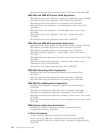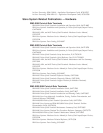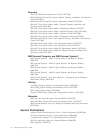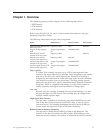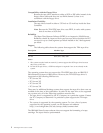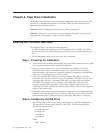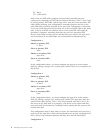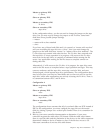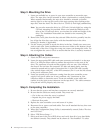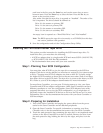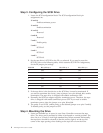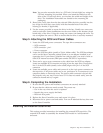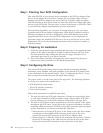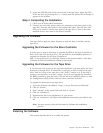SL – Slave
CS – Cable Select
Each of the two IDE cables (primary and secondary) normally has two
connectors for attaching two IDE devices (master and slave). The C: drive must
be on the primary IDE cable, and the tape drive must be on the secondary IDE
cable. When choosing your configuration, remember that two devices on the
same IDE cable cannot be accessed at the same time. Performance is increased
if you can avoid using both devices that are on the same IDE cable at the same
time. A device will lock out another device on the same IDE cable until the
operation is complete. Assuming that there are only two supported IDE
devices, hard disks and tape drives, and that there can only be one tape drive
and a maximum of two hard disks, the recommended configurations are:
Configuration 1
Master on primary IDE:
C: drive
Slave on primary IDE:
none
Master on secondary IDE:
tape drive
Slave on secondary IDE:
none
In the configuration above, you must configure the tape drive as the master
(MA) by placing a jumper over vertical pins 5 and 6. There is no contention for
the devices.
Configuration 2
Master on primary IDE:
C: drive
Slave on primary IDE:
D: drive
Master on secondary IDE:
tape drive
Slave on secondary IDE:
none
In the configuration above, you must configure the tape drive as the master
(MA) by placing a jumper over vertical pins 5 and 6. The tape drive does not
contend with other devices. The C: drive does contend with the D: drive. If a
file access to one hard disk is in progress, a file access to the other hard disk
must wait until the first access is complete before starting the file access to the
second hard disk.
This configuration may be best when you have two hard disks and you have a
need to run the tape drive while other applications are actively accessing the D:
drive. There is no contention between the tape drive and the hard disks.
Configuration 3
4 TR-4 Tape Drive User’s Guide



